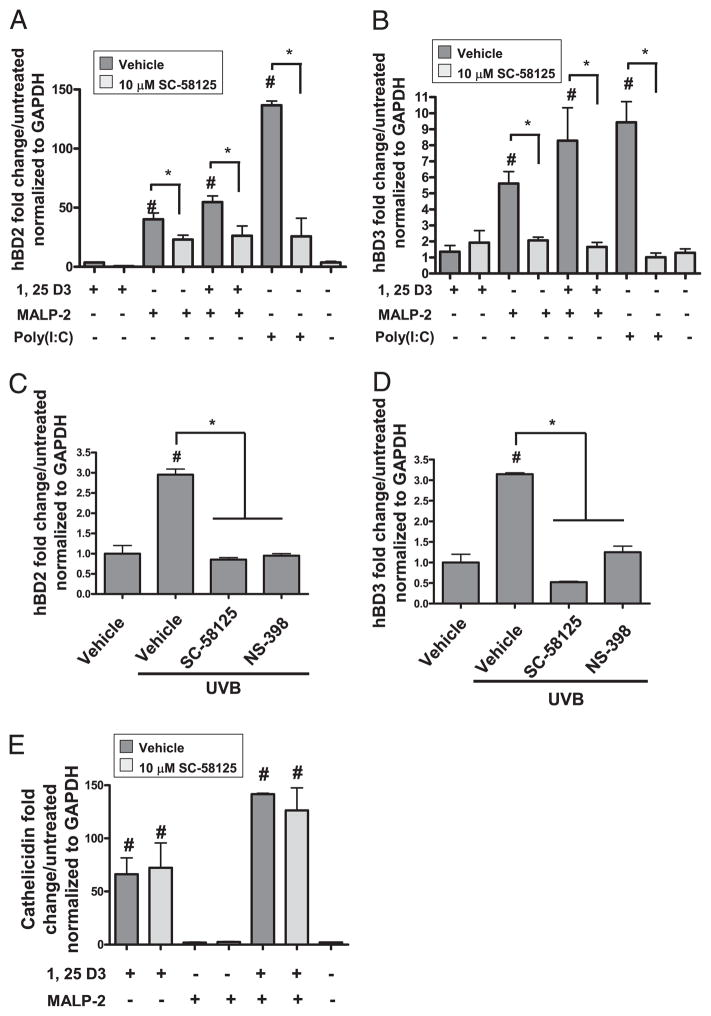FIGURE 2.
Cox-2 inhibitors attenuate TLR ligand-induced β-defensins. A, NHEKs were pre-treated with SC-58125 (10 μM) and then treated with 1,25-D3 (500 nM), MALP-2 (500 ng/ml), 1,25-D3 (500 nM) plus MALP-2 (500 ng/ml), or poly(I:C) (10 μg/ml) for 24 h. MALP-2, MALP-2 plus 1,25-D3, and poly(I:C) significantly induced hBD2 (#p < 0.05), and SC-58125 significantly attenuated this induction (*p < 0.05). B, MALP-2, MALP-2 plus 1,25-D3, and poly(I:C) significantly induced hBD3 (#p < 0.05), and SC-58125 significantly attenuated this induction (*p < 0.05). C, NHEKs were pre-treated with SC-58125 (10 μM) or NS-398 (10 μM) and then exposed to UVB (15 mJ/cm2). hBD mRNA expression was measured after 24 h. UVB induced hBD2 mRNA ~3-fold (#p < 0.05). Cox-2 selective inhibitors significantly attenuated UVB-induced hBD2 mRNA (*p < 0.05). D, UVB induced hBD3 mRNA ~3-fold (#p < 0.05). Cox-2 selective inhibitors significantly attenuated UVB-induced hBD3 mRNA (*p < 0.05). E, 1,25-D3, 1,25-D3 plus SC-58125, MALP-2 plus 1,25-D3, and MALP-2 plus 1,25-D3 plus SC-58125 significantly induced cathelicidin mRNA expression (#p < 0.05). SC-58125 failed to inhibit 1,25-D3 or 1,25-D3 plus MALP-2–induced cathelicidin mRNA expression.

